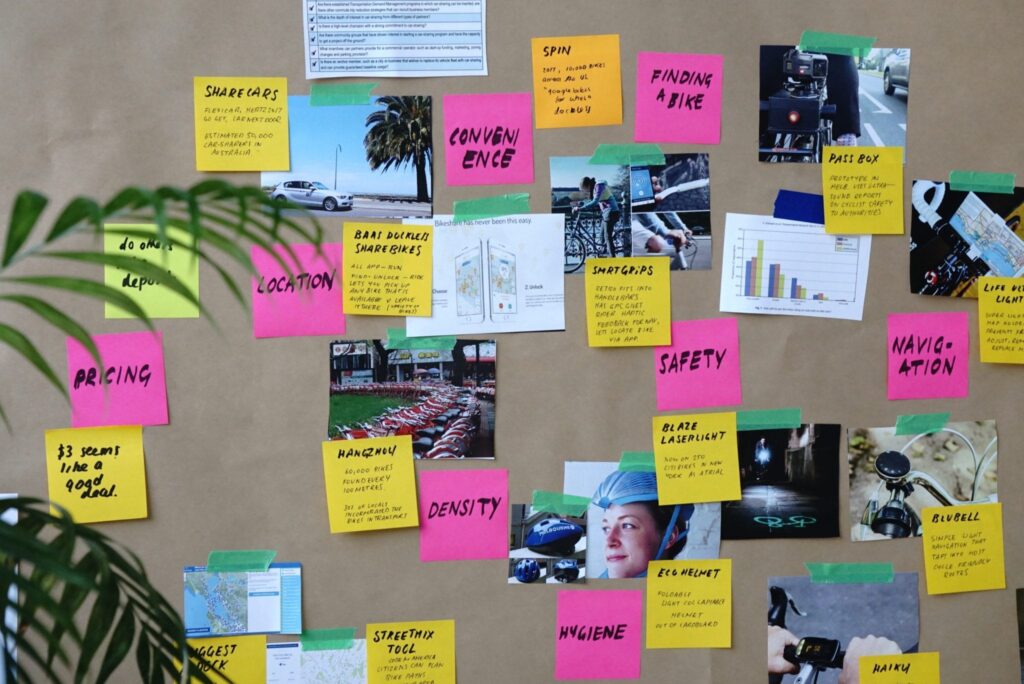What is Design Thinking for Human Experience (HX)?
Tim Brown, CEO and President of IDEO defines ‘Design thinking’ as a human-centred and collaborative approach to problem solving, using a designed mindset to solve complex problems. Design Thinking advocates a five stage process that moves from empathising with the user to generating ideas and testing with prototypes:
- Empathise: understanding the problem at hand and how to solve it. This involves understanding the emotions and motivations of your end users — customers, employees, patients or citizens.
- Define: analysing the information that you have gathered at the Empathise part of the process. This allows you to move onto the next stage of Design Thinking.
- Ideate: generating a broad scope of ideas; brainstorming a prototype that will streamline the next stage of your Design Thinking process.
- Prototype: a demo provided by the multiple ideas facilitated by the Ideate stage. Prototypes are shared and act as an ‘experimental’ aspect of the process with the goal of educating.
- Test: once feedback is gathered from the Prototype stage, further testing can be done which allows your team to revise their actions in order to produce the best product or service possible that elicits the most positive emotions from the group of people you are targeting.

So what does this have to do with Customer Experience (CX) and Employee Experience (EX)?
It is rooted on the idea that empathy is the foundation of any human-centric design and thus in any Experience. In summary, if you want to improve the HX you need to understand the customer or employee to whom the experience applies. Design thinking is one way to achieve this.
Why is Design Thinking Important?
Design thinking blends both analytical and intuitive thinking. If viewed solely from an analytical perspective, your experience may stagnate and become predictable.
Combining both thinking processes produces a more powerful, solution-based approach; centred on the needs of the specific person, it seeks to ‘test and refine’ in a more agile way. Given that digital experiences — customer experience in particular —rapidly change, surely this approach is appropriate? Research from Forrester/Adobe seems to evidence its value. Seventy percent of design led companies reported having a stronger or best-in-class digital experience compared to competitors. Whereas the Design Management Institute say that the design-driven companies have outperformed the S&P Index by 219% over 10 years.
Design Thinking and Emotion
Any experience management programme can benefit from Design Thinking. The central reason is that if we knew how to solve our customer, patient or employee experience problems they’d have been fixed already. Without design thinking we would have missed out on innovations such as the post-it note. Originally intended as a strong adhesive, it was only the design thinking from Arthur Fry, whose need for holding bookmarks in his hymn book inspired a new and enduring use case. For human experience professionals seeking to solve CX and EX challenges design thinking can prove a valuable exercise.
Empathise
Adoreboard’s emotion analysis platform, Emotics, can be implemented at the ‘Empathise’ stage of design thinking. Emotics measures emotional responses to an existing product, service or process. Emotics then provides deep insights into what is working today, and key aspects which can be brought forward and focused on in the ‘Ideation’ stage.
Benchmarking against competitors provides context to the key HX challenges that you are focusing on. Benchmarking aims to help users understand what themes are driving Joy and Trust, along with detractor emotions such as Rage and Anger.
Emotion analysis is key to understanding the valuable feedback that is gathered from individuals interacting with the brand, product or service. Adoreboard’s work with Unilever is a great example of how valuable feedback can be gained by A/B testing on, for example, two different shampoo products. Emotion analysis can be used to understand why individuals felt specific emotions towards each product.
Test
When it comes to the testing stage, feedback can be collected via Survey Monkey, where open ended questions are asked in order to identify which aspects of the prototype generated the strongest emotional responses. For example, if Apple were going through this stage and asked customers how they felt about the current iPhone, emotion analysis could identify that people would express Joy towards the camera but anger towards the low battery life. This would then provide valuable feedback on the areas that deliver the most impact and which areas could be specifically targeted in order to improve customer experience.
In summary, CX and EX professionals can waste valuable time on initiatives generated from ‘inside out’ thinking. Design thinking involves the end ‘users’ in the process and provides a systematic approach for generating and testing a new idea. For customer experience professionals seeking to solve CX challenges, or any HX professional looking to improve a human-centric experience, Design Thinking can prove a valuable exercise.
To learn more about how to optimise your employee or customer experience through our Emotics platform, click here.




